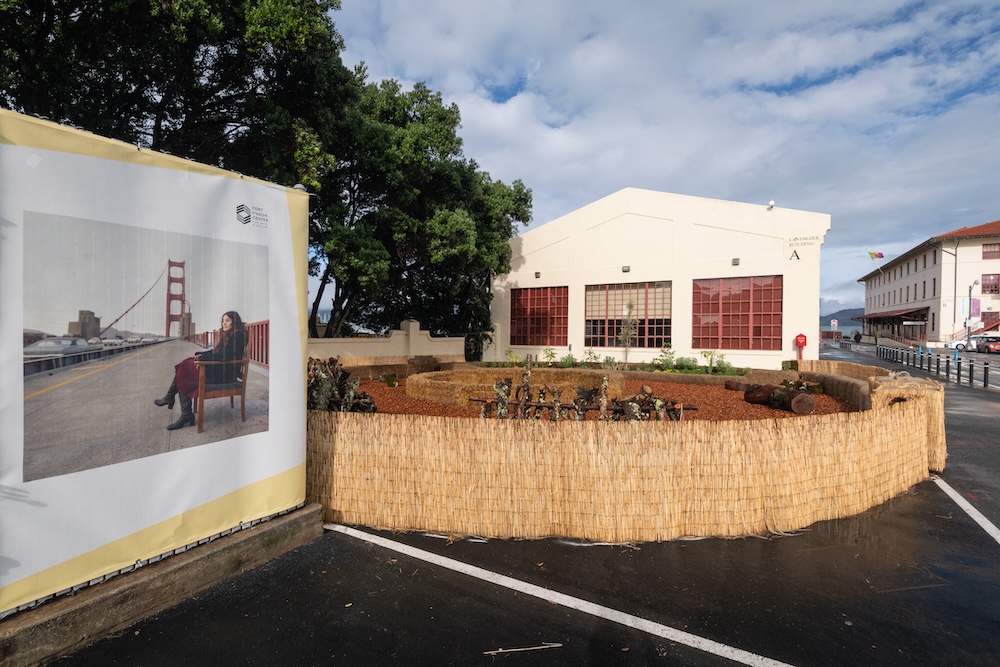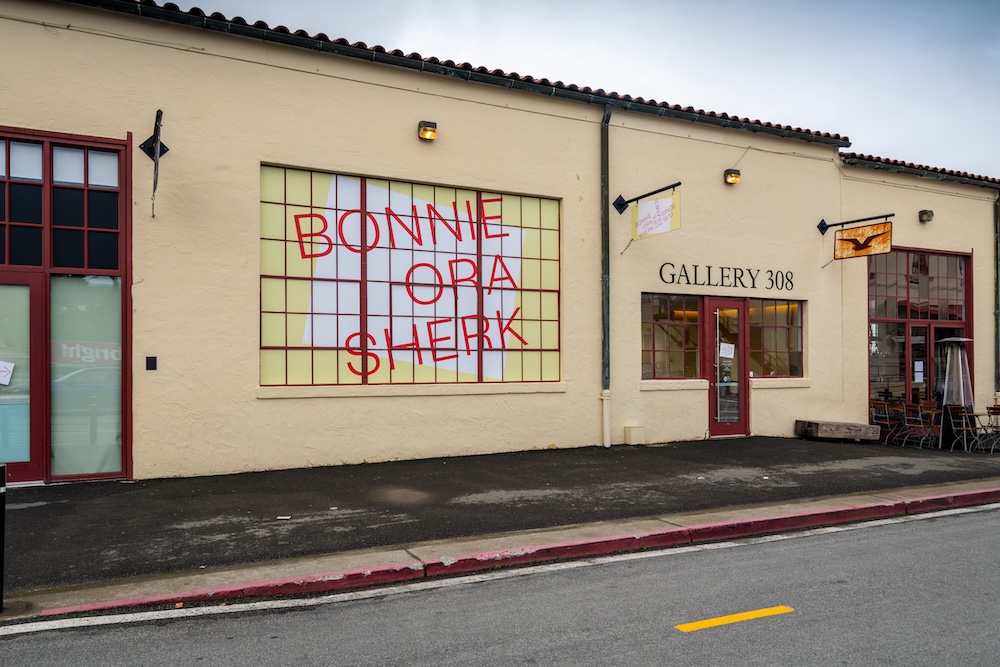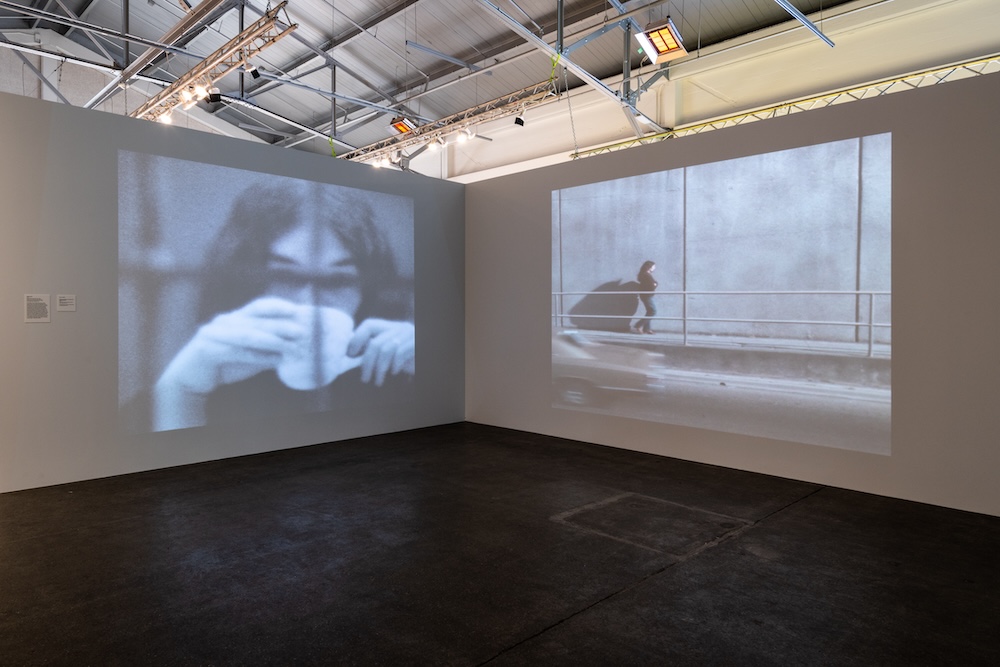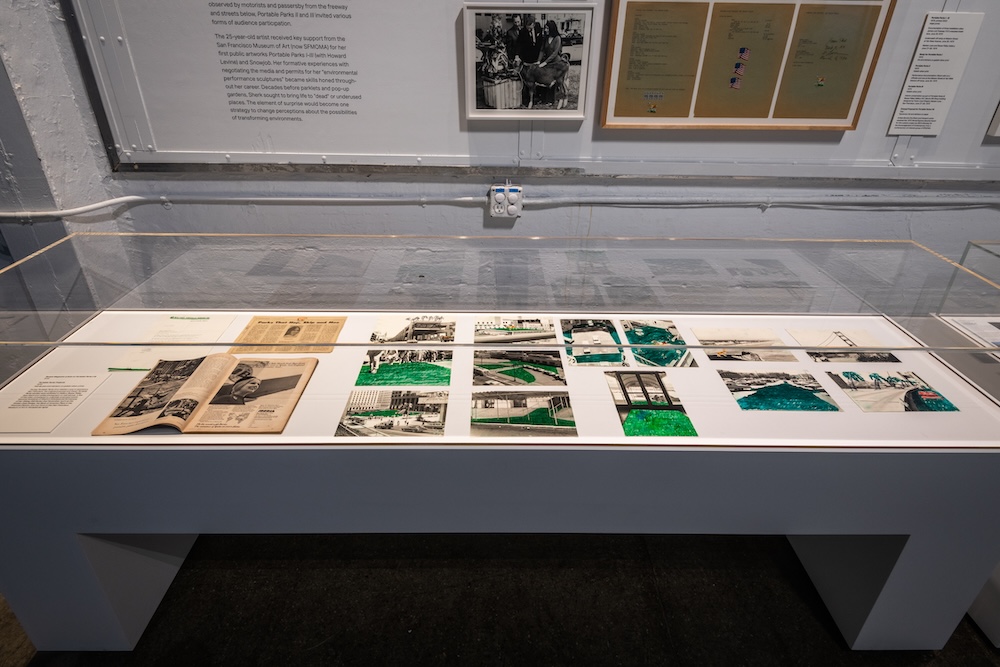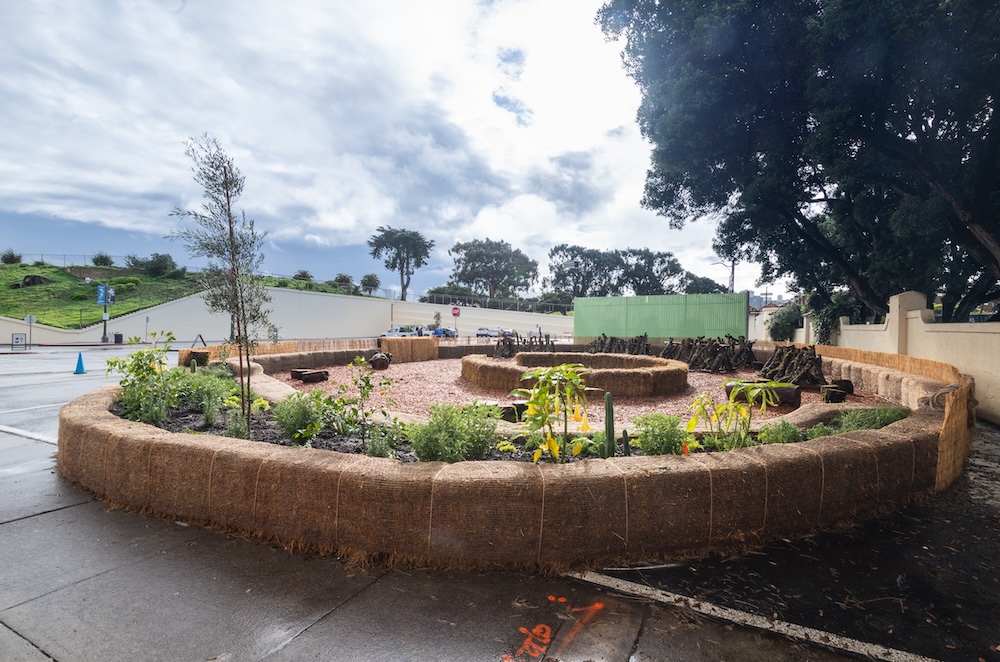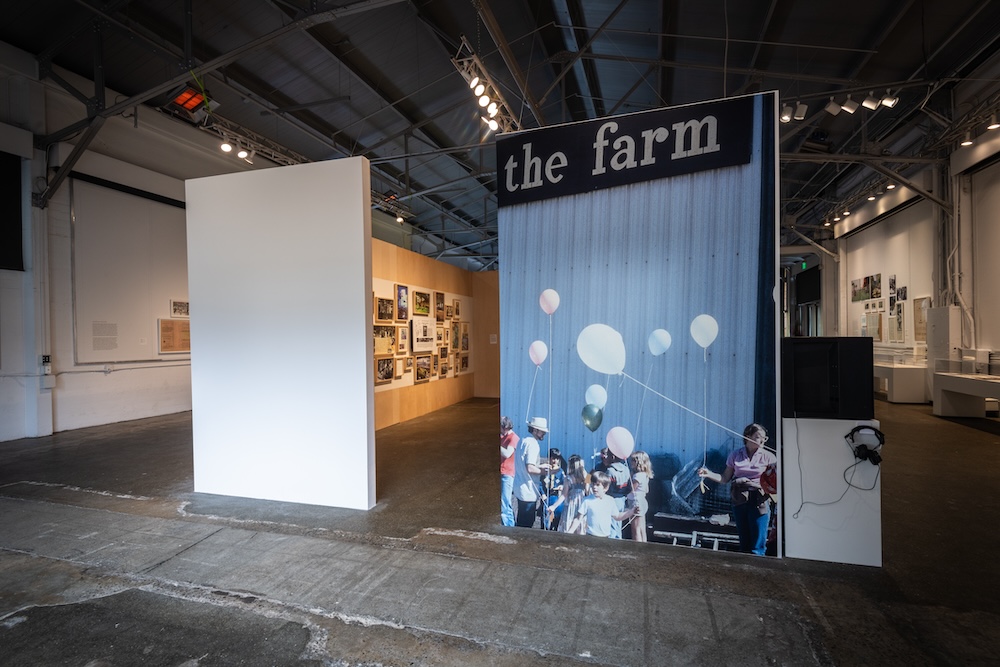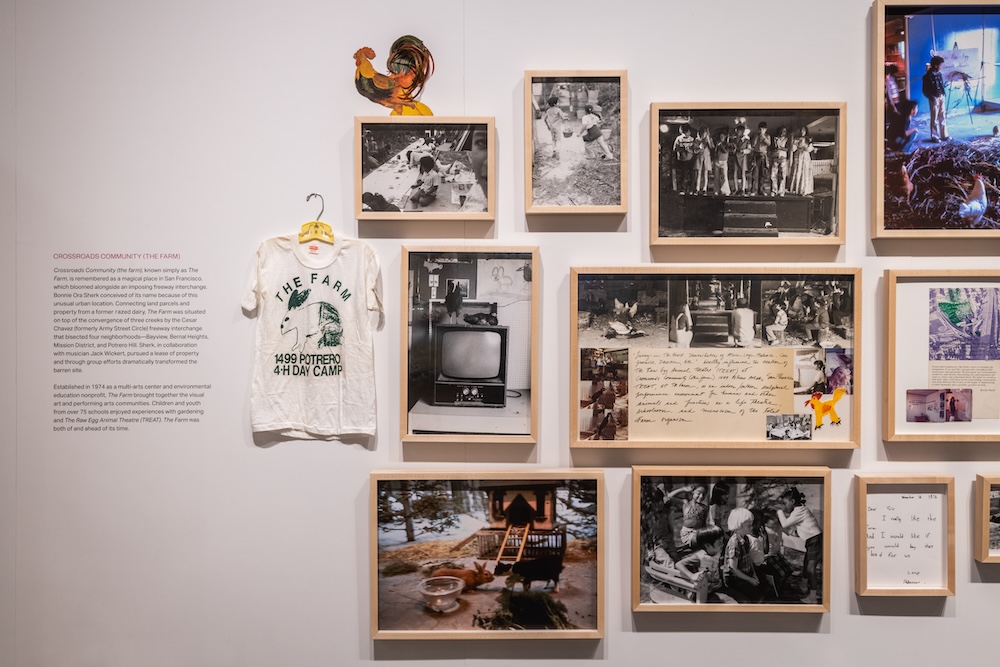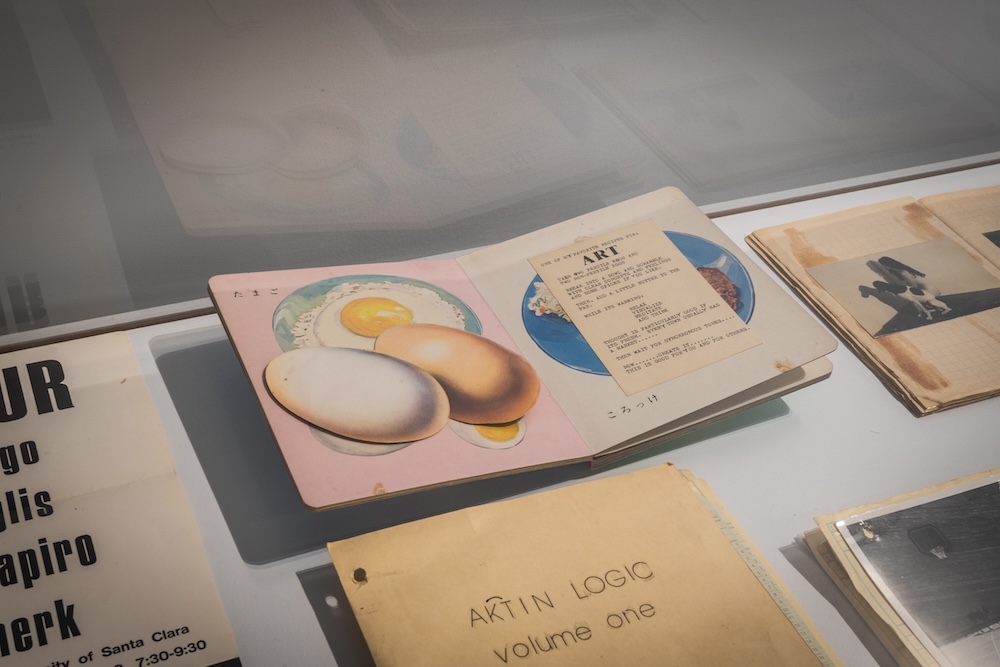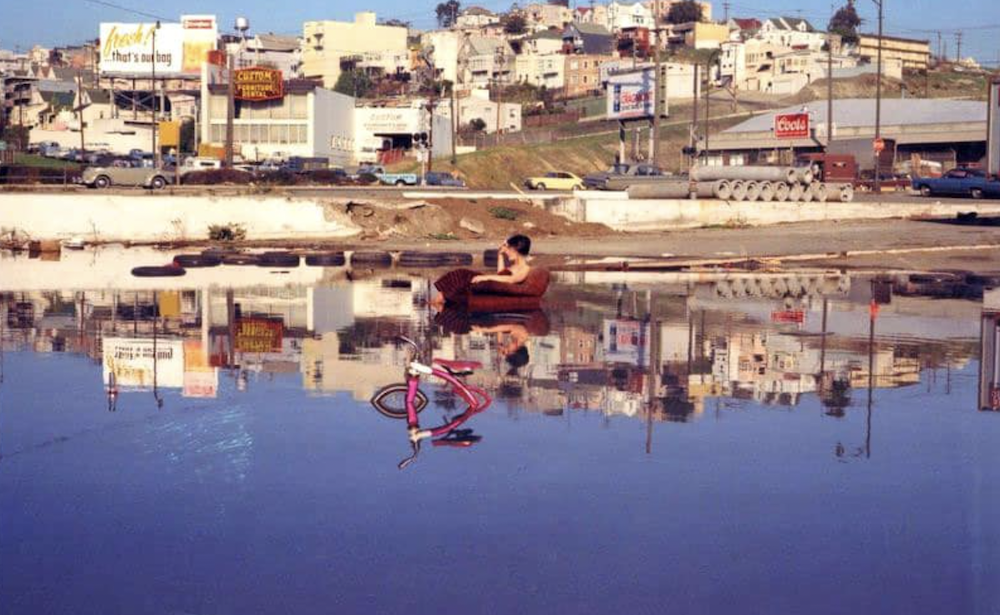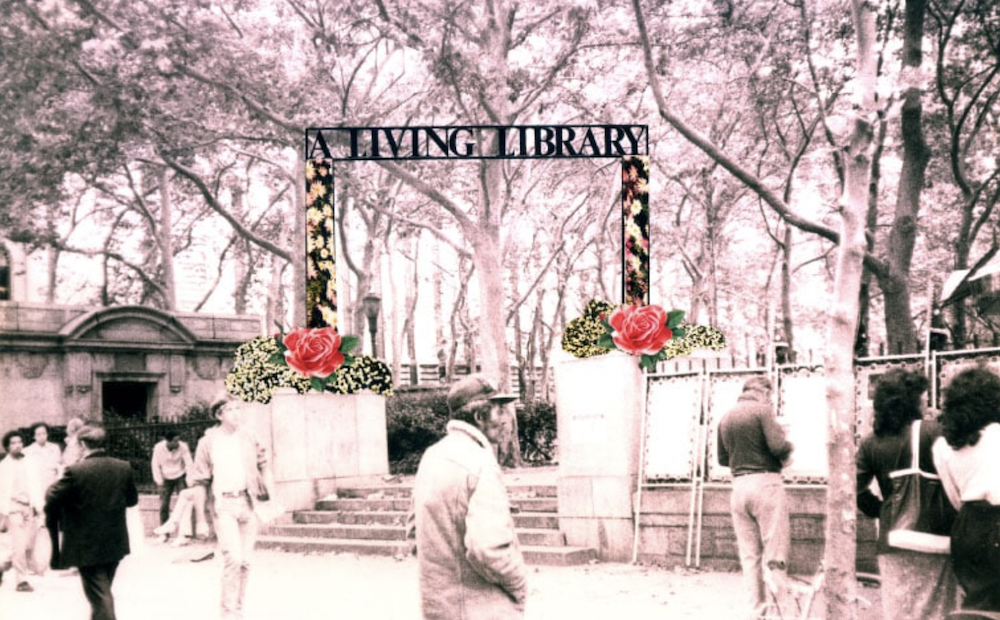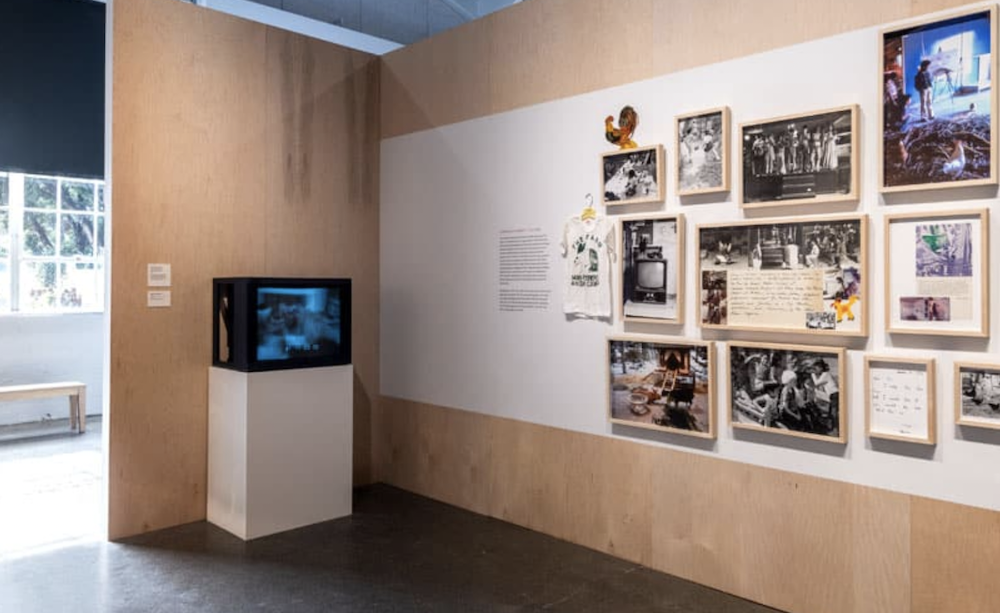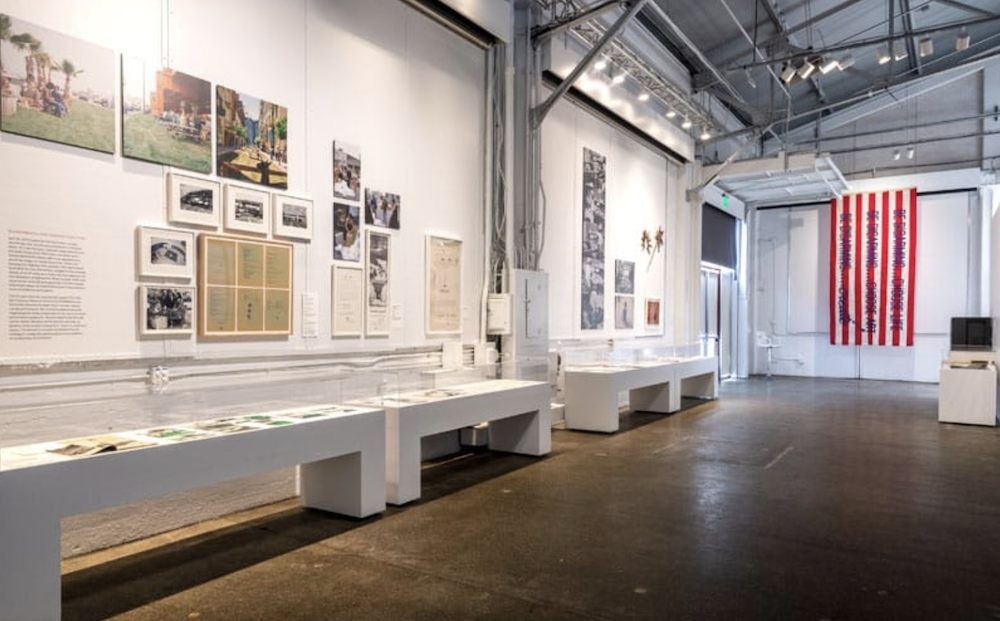This is a show we highly recommend checking out at the stunning San Francisco space, Fort Mason Center for Arts & Culture (FMCAC). They are currently presenting a brilliant retrospective, Bonnie Ora Sherk: Life Frames Since 1970, the first posthumous exhibition survey of the late artist, environmental educator, and landscape planner. Before urban farms reclaimed unused city parcels, before parklets popped up across urban streetscapes, before New York City’s High Line and the San Francisco Presidio’s Tunnel Tops repurposed stretches of railway and highway into green spaces – there was the groundbreaking work of Bonnie Ora Sherk (1945-2021).
Decades ahead of her time, Sherk’s pioneering projects in 1970s San Francisco, including Portable Parks I-III (1970, with Howard Levine) and Crossroads Community (the farm), conceptualized new uses for overlooked urban landscapes, and laid the foundation for a global movement to reclaim urban spaces.
Bonnie Ora Sherk: Life Frames Since 1970 presents newly transferred film and video as well as rarely seen photographs, collages, works on paper, artist books, printed matter, and ephemera of Sherk’s early performances and site-specific interventions in the 1970s and 1980s. Sherk’s expansive artistic vision for transforming urban landscapes through A Living Library (1981-present) is explored through a selection of proposals and drawings since the 1980s.
“Around the world, there is a movement underway to transform urban spaces like parking spaces, freeway on-ramps, and streets themselves into gathering places,” said Mike Buhler, President and CEO of FMCAC. “The seeds of that movement are rooted in Bonnie’s work here in San Francisco.”
Curated by Tanya Zimbardo, Bonnie Ora Sherk: Life Frames Since 1970 traces the development of Sherk’s commitment to art and ecology in the public sphere over a range of projects. Sherk is recognized as a key figure among the first generation of Conceptual Art and performance artists in California and the alternative or artist-run space movement of that era.
(Cover of the upcoming Bonnie Ora Sherk: Life Frames Since 1970 catalog)
Her solo performances and installations in the 1970s – such as Snow Job (1970) in front of the San Francisco Museum of Art (now SFMOMA), Public Lunch (1971) at the San Francisco Zoo, and Living in the Forest: Demonstration of Atkin Logic, Balance, Compromise, Devotion, etc. (1973), in the de Saisset Museum at Santa Clara University – re-imagined ecosystems: a mound of snow appears in San Francisco; the artist eats lunch next to tigers; animal habitats take root in an art gallery. These early works show the artist’s lifelong study of the interrelationships between plants, animals, and humans, with the goal of creating sustainable systems for social and ecological transformation.
“Before her passing, Sherk enjoyed a resurgence of interest in her pioneering work in the public sphere and its legacy for contemporary art, from ecofeminism to social practice,” said Tanya Zimbardo, guest curator. “It is an honor to be able to offer an in-depth look at the evolution of her ideas, which resonate with a range of community gardening, food justice, and environmental sustainability initiatives today in the Bay Area.”
Sherk’s first public installation, Portable Parks I-III (1970, with Howard Levine), transformed a series of urban “dead spaces” in San Francisco – the former James Lick Freeway that crossed over Market Street; two concrete islands adjacent to the Mission/Van Ness Off ramp; the whole street of Maiden Lane between Stockton and Grant – into green, living environments, complete with sod, palm trees, and live animals. The temporary installations would go on not only to win critical acclaim but would presage the pop-up urbanism movement decades later.
Considered Sherk’s best-known project, The Farm, was a multi-arts center, environmental education farm, and community gathering place located underneath a major freeway interchange in San Francisco at the former location of a dairy farm. Working to unite parcels of land across four neighborhoods bisected by the freeway, The Farm engaged multigenerational neighbors and school children from across the city while playing host to visual, performing arts, and music communities until 1987. Inspired by Sherk’s work, San Francisco ultimately transformed the site into a permanent park, Potrero del Sol.
For the exhibition, the collaborative spirit of Sherk’s era as founding president of The Farm from 1974 to 1980 are pictured through video, photography, and posters spanning hands-on activities to circus and dance performances.
“Bonnie is the rare artist whose contributions extend beyond her medium of choice and into the physical fabric of our urban environment,” said Frank Smigiel, Director of Arts Programming and Partnerships for FMCAC.
Today, Sherk’s bicoastal nonprofit A Living Library (ALL), established in 1981, continues her vision for community-oriented, environmental projects located on Roosevelt Island, NYC, and the Bernal Heights, and OMI/Excelsior neighborhoods in San Francisco. ALL brings community members and youth together to restore native habitats, create educational gardens, plant trees, and daylight San Francisco’s Islais Creek watershed.
Also on the occasion of Sherk’s exhibition, FMCAC has commissioned a pop-up community garden developed by John Bela, an urbanist, co-founder of Rebar and co-creator of the modern parklet, in tribute to the artist’s Portable Parks.
“Bonnie’s performative installations laid the groundwork for parklets as an expression of community in green spaces on our city streets,” said Bela. “There is a direct through line from her work in the 1970s to the parklets of today.”
FMCAC is producing the first significant catalog dedicated to the artist. Designed by McCall Associates and distributed by D.A.P., the forthcoming fully illustrated publication featuring key historic interviews (Linda Frye Burnham and Linda M. Montano) and writings by Sherk with texts by co-editors Smigiel and Zimbardo and guest authors (John Bela, Jana Blankenship, Robert Croonquist, Karen Moss, Jen Delos Reyes, Ryan David Tacata, and Patricia Watts).
A symposium and celebration of the publication launch closes out the exhibition’s run in March 2024.
Bonnie Ora Sherk: Life Frames Since 1970 is part of FMCAC’s signature Gallery 308 exhibition series presenting leading contemporary artists, including Sophie Calle, Janet Cardiff, Joan Jonas, Sir Isaac Julien, and Sunny A. Smith.




